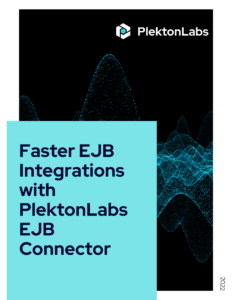No matter what sort of industry your business is based in, there is a good chance that the marketplace is rapidly shifting. Due to the opportunities that arise from digital transformation, older business models are quickly becoming obsolete. Instead, new models try to build on more agile foundations in businesses.
At the same time, customer needs are evolving as well. If businesses can’t keep up with their customer’s needs, they have no choice but to go extinct. The business needs to change along with its customers. And to do so, it needs to think ahead and have a very flexible or agile business foundation.
In other words, both technology and workplace cultures are evolving at lightning pace. However, the average business struggles to keep up with all these changes. However, with an IT team taking innovation to its further, this can be done without breaking a sweat. But your business model needs to be future-proof and agile with a rock-solid foundation.
An agile foundation allows organizations to weather any crisis that threatens them. The best way to develop this is to promote an atmosphere of communication and collaboration within the business, as well as with its partners while prioritizing adaptability and continuous delivery.
How Can Agile Foundations Be Achieved in a Business?
These four changes can enable businesses to work with an agile foundation and keep up with all the changes in the industry.
Figure Out the Costs of Integration
Before you look into an agile foundation, you must calculate the cost of your integration project. As integration can help whole industries figure out who’s getting ahead and what issues a company needs to address, leaders of the industry have come up with two reliable ways to measure its value. These are:
- The direct value created from an integration platform
- The indirect value enabled by an integration platform
An IT team’s potential impact needs to be converted to clear business metrics when proposing any large-scale integration projects to investors or shareholders. The best way to do this is to calculate how much integration will cost the business in the present, and compare it to how a new model will improve outcomes, achieve short-and long-term business goals, and increase profit margins.
Come up with an Innovative Business Model
The world seems to be spinning faster with each passing day and business practices need to reflect that. The main problem with fragmented hybrid environments is that they make data inaccessible and integration unnecessarily complex.
Instead, businesses must enable business agility by investing in unified platforms that will derive value from data and use it to gain insights. These insights should drive major business decisions. Becoming a data-driven organization will give your business an enormous advantage over the competition and make it much easier to achieve business objectives.
Get Your Customers and Employees Involved
Everyone in the company needs to be on the same page when it comes to the overall vision and aims that follow your integration strategy. This means giving your employees the space to get the job done while guiding them in the right direction. An important part of agility comes by letting go of micromanagement—give your employees the tools they need to run day-to-day operations and trust them to do it right.
At the same time, include your customers in the delivery process as they are the ones who consume your products/services. Effective customer engagement forms a kind of unspoken partnership with your customers, which enables you to provide the best outcomes for your clients.
This itself encourages a culture of flexibility and agility when trying to meet customer needs. It allows businesses to adapt to changing circumstances, as well as changing customer needs.
Leverage Collaboration and Partnerships
Any innovation model needs a close alignment with business peers for it to work. Collaboration is an important part of achieving overall agile foundations and flexibility in any business. Identifying similar goals and initiatives and working closely with partners makes it much easier to successfully reach those goals.
In addition, it is important to remember that your business should have values and objectives that align with those of your partners. Also, your collaboration should empower everyone involved in the businesses: minimizing risk, improving quality, and accelerating processes.
In Conclusion
Digital transformation is the tide that is coming for all the businesses that dabble with IT. But instead of looking at it as something daunting, it is best to view it as something that will benefit your business in the long run. Adjusting to digital transformation in this brave new world will give your business the agile foundation it needs for scalable processes, propelling right into the future.




